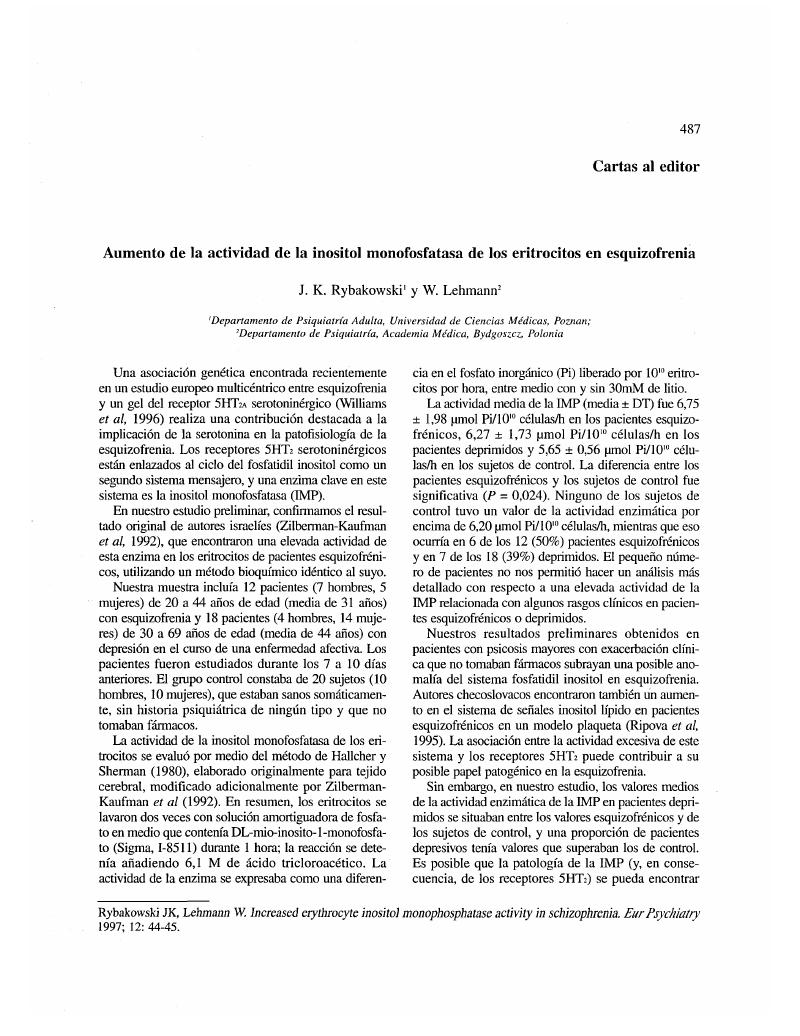No CrossRef data available.
Article contents
Aumento de la actividad de la inositol monofosfatasa de los eritrocitos en esquizofrenia
Published online by Cambridge University Press: 12 May 2020
Abstract
An abstract is not available for this content so a preview has been provided. As you have access to this content, a full PDF is available via the ‘Save PDF’ action button.

- Type
- Cartas al editor
- Information
- Copyright
- Copyright © European Psychiatric Association 1997
References
Bibliografia
Hallcher, LM, Sherman, WR. The effect of lithium ion and other agents on the activity of inositol-1-phosphatase from bovine brain. J Biol Client 1980; 255: 10896–901.Google Scholar
Mikuni, M, Kusumi, I, Kagaya, A, Kuroda, Y, Mori, H, Takahashi, K. Increased 5-HT-2 receptor function as measured by serotonin- stimulated phosphoinositide hydrolysis in platelets of depressed patients. Prog Neuro-Psychopharmacol Biol Psychiatry 1991; 15: 49–61.Google ScholarPubMed
Ripova, D, Nemcova, V, Strunecka, A, Höschl, C. Inositol lipid signalling system in schizophrenia. Homeostasis 1995; 36 (Suppl 1, part 2): 126.Google Scholar
Williams, J, Spurlock, G, McGuffin, Pet al. Association between schizophrenia and T102C polymorphism of the 5-hydroxytryptamine type 2a-receptor gene. Lancet 1996; 347: 1294–6.CrossRefGoogle ScholarPubMed
Zilberman-Kauffman, M, Agam, G, Moscovitz, L, Livne, AA, Belmaker, RH. Elevated inositol monophosphatase activity in schizophrenic patients. Clin ChimActa 1992; 209: 89–93.CrossRefGoogle Scholar




